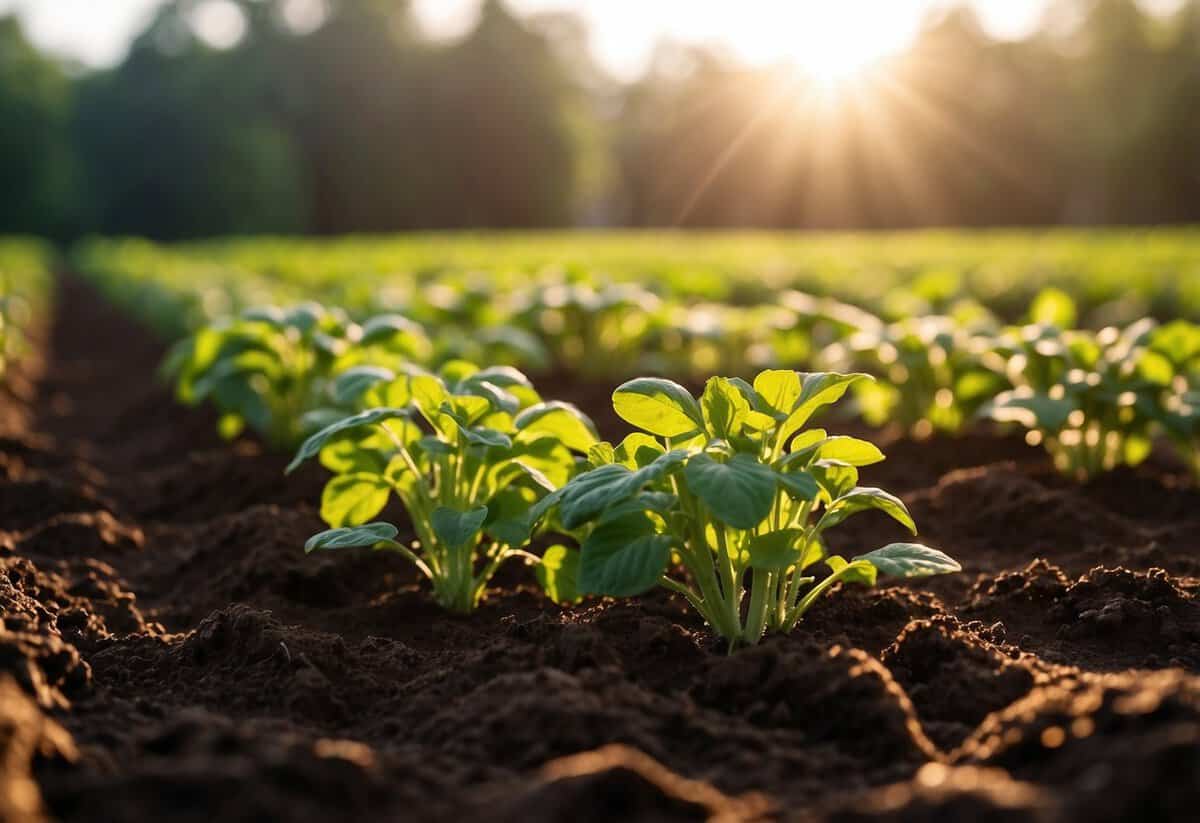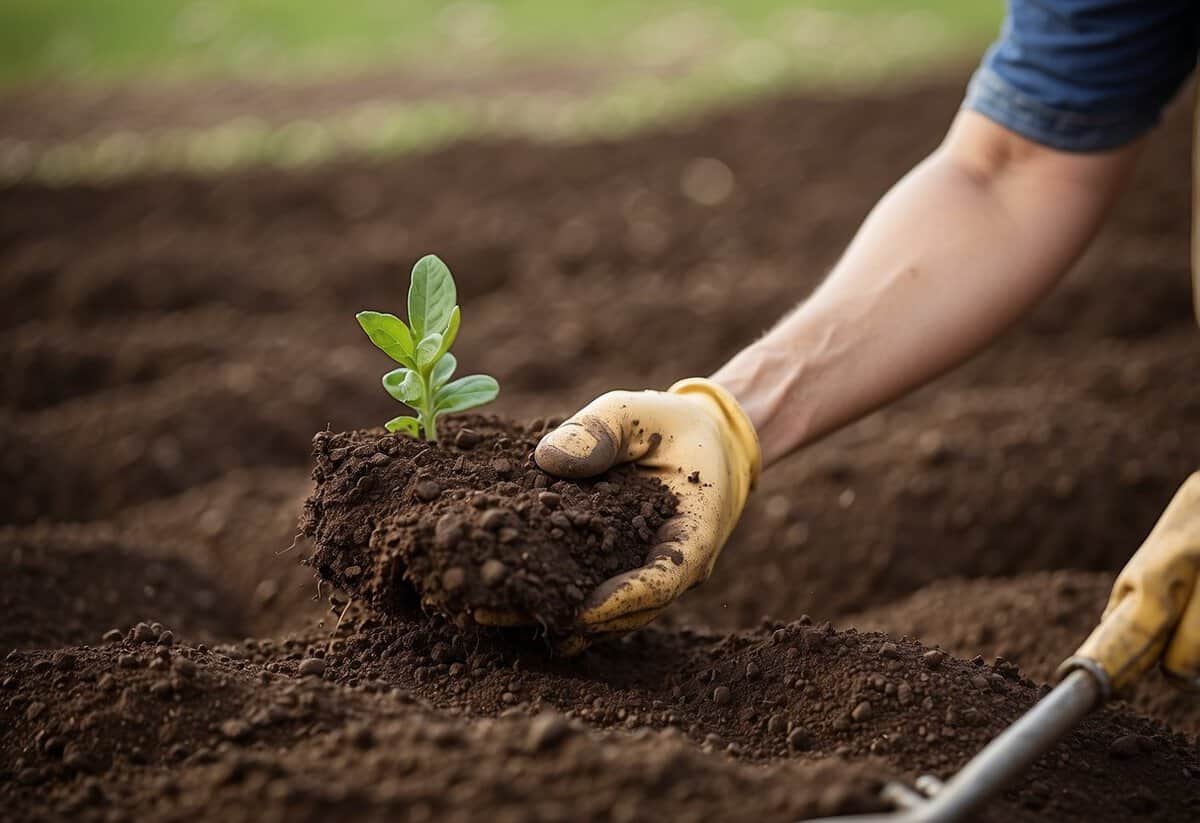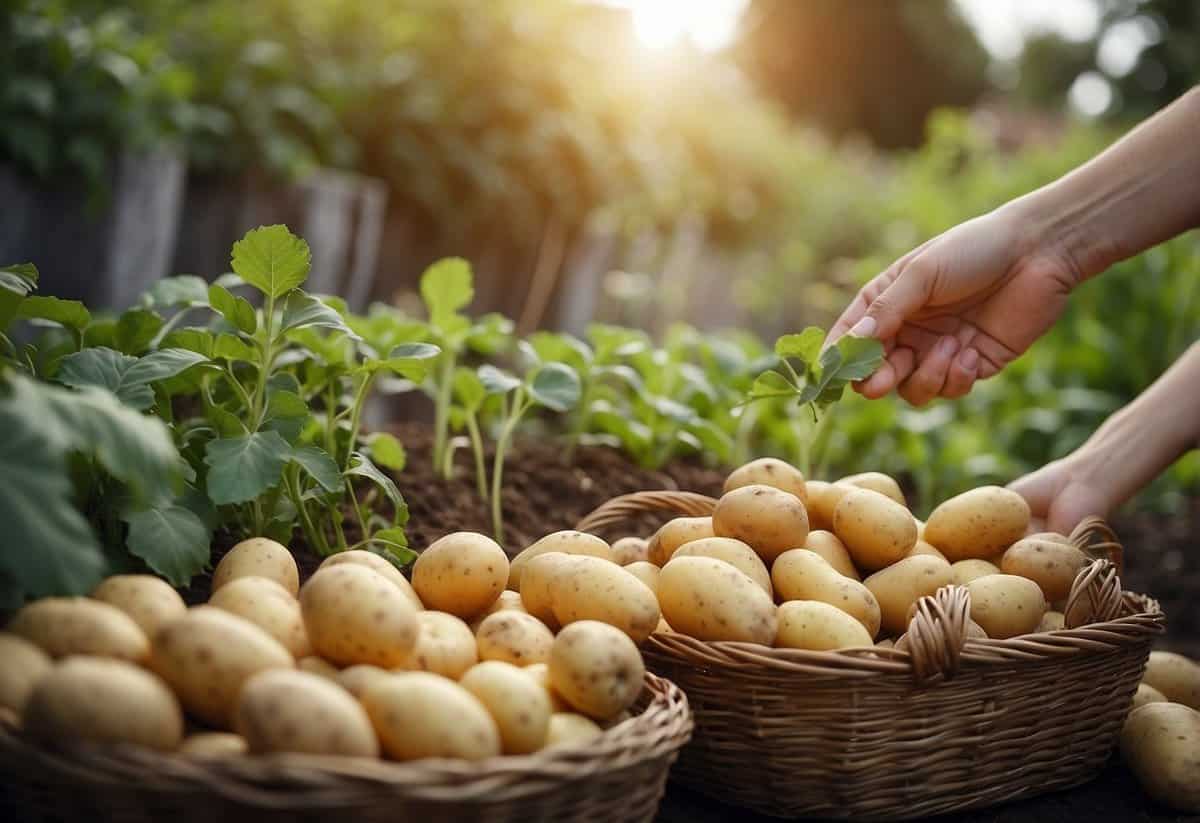Potato Garden Tips: Easy Ways to Boost Your Harvest
Growing potatoes in your garden can be a rewarding and enjoyable experience. With the right tips and guidance, you can boost your potato harvest significantly. Whether you’re a beginner or have some gardening experience, learning the best practices for growing potatoes will help you achieve a plentiful crop.

In this article, you’ll find practical advice and simple strategies to make your potato garden thrive. You’ll discover how to plant, nurture, and harvest your potatoes successfully. Get ready to enjoy your homegrown potatoes straight from your garden to your table!
1) Choose the right potato variety

Selecting the right potato variety is key to a successful garden. Different types of potatoes thrive in different conditions. For example, Russets do well in cooler climates with well-drained, slightly acidic soil.
Red potatoes can handle a variety of environments but prefer moist conditions. Understanding these preferences helps ensure a bountiful harvest. Find the best match for your garden’s climate and soil.
2) Use Seed Potatoes

Using seed potatoes is crucial for a successful potato garden. Seed potatoes are small potato pieces specifically meant for planting.
When planting, you should bury them about 4-6 inches deep with the eyes facing up. Make sure to space them 12-15 inches apart for better growth.
If you’re planting rows, keep 18-24 inches between each row. For more tips, you can check out the detailed guide on how to plant seed potatoes.
3) Prepare the soil well

To grow healthy potatoes, focus on the soil. Use nutrient-rich, loose sandy loam soil with a pH of 5.5 to 6.5.
Add 3-4 inches of well-rotted compost and mix it with the existing soil. Loosen the soil up to a depth of 12 inches and remove any stones or debris. This ensures the potatoes can grow without obstacles.
If your soil pH is not ideal, you can amend it by adding organic matter like pine needles or oak leaves. This helps make the soil slightly more acidic. You can learn more about soil preparation at Gardening ABC.
4) Plant at the correct depth

Planting potatoes at the right depth is crucial for a good harvest. Aim to plant your seed potatoes about 4-6 inches deep. This prevents them from being exposed to sunlight, which can make them turn green and toxic.
Ensure you space them about 8-12 inches apart in rows that are 2-3 feet apart. This gives them the room they need to grow well. For more tips, you can check out more details on planting depth on Gardening Know How.
5) Hill the Soil

Hilling the soil helps your potato plants grow better and produce more tubers.
As your potato plants grow to about 6-8 inches tall, gently add more soil around the base, covering all but the top few inches of the vines.
You can use soil, grass clippings, or weed-free straw to hill your potatoes. This encourages the growth of new potatoes under the soil. For more details, visit Gardening ABC.
Repeat the hilling process when the vines grow another 6-8 inches.
6) Water consistently

Watering is key for healthy potatoes. Potatoes need about 1-2 inches of water a week.
Check the soil moisture regularly. It should be damp but not wet. Water every 3-5 days or when the soil feels dry.
Reduce watering once the tops start dying back and stop completely two weeks before harvest. This helps the potatoes mature.
7) Mulch to retain moisture

Using mulch in your potato garden helps keep the soil moist. It acts as a barrier, reducing water evaporation.
Spread the mulch between your potato plants and extend it beyond the plants’ perimeter. Avoid piling it against the stems to prevent rot.
Mulching also insulates the soil, keeping the temperature stable. This provides a perfect environment for your potatoes to grow. To learn more, see these potato growing tips.
Adding fresh layers of mulch as the plants grow ensures the tubers stay covered and protected.
8) Watch for pests

Keep an eye out for pests like wireworms. These pests feed on your potato tubers and can cause significant damage. Identifying them early can help save your crops.
Another common pest is the potato beetle. These beetles eat the leaves of the plant, which can weaken it. Check your plants regularly to spot any signs of these pests.
Late blight is a disease you should watch for as well. It shows up as brown or black patches on the leaves and stems. Early detection and treatment can help stop its spread.
9) Rotate crops annually

Rotating your crops helps keep your soil healthy. By not planting the same vegetables in the same spot each year, you reduce the chances of pests and diseases.
Planting potatoes in the same spot can lead to a build-up of soil issues. Consider planting legumes like peas or beans after potatoes. These plants add nitrogen to the soil, making it better for future crops.
Discover more about crop rotation for potatoes and keep your garden thriving!
10) Harvest at the right time

To get the best potatoes, you need to harvest them at the right time. Early potatoes mature in about 60 to 80 days, perfect for a quick summer harvest. Wait until the foliage yellows and begins to die back. This signals that your potatoes are ready. For maincrop potatoes, which take 100-120 days, wait until the foliage is fully dead.
When harvesting, dig carefully to avoid damaging the tubers. If you’re using a grow bag, simply dump the soil and pick out your potatoes. Happy harvesting! For more details, check out Harvesting Potatoes.
Preparing Your Soil

Good soil is essential for growing healthy potatoes. You’ll need to test your soil quality and add organic matter to ensure your potato plants thrive.
Testing Soil Quality
Start by checking your soil’s pH level. Potatoes grow best in soil with a pH of 5.5 to 6.5. You can easily test this using a soil pH test kit from a garden store.
Next, you want to ensure the soil is loose and well-drained. Compacted or clay-heavy soil can hinder the growth of potato tubers. If your soil is dense, consider loosening it up to a depth of at least 12 inches.
Look out for stones and debris. Removing these will help roots spread easily and tubers to grow without obstruction.
Adding Organic Matter
Adding compost or well-rotted manure to your soil can significantly boost its fertility. Spread 3-4 inches of compost over your garden bed and mix it well with the existing soil.
Organic matter improves soil structure, drainage, and nutrient content. This helps in creating a nutrient-rich environment that potato plants need for optimal growth.
Consider using aged compost or commercial organic planting mix. These materials are rich in nutrients and can make your soil ideal for potato cultivation.
Ensure that the soil remains loose and airy. This helps in root development and allows water to drain properly, preventing diseases and rot.
Selecting The Right Potato Varieties

Choosing the right potato variety can make a huge difference in your garden.
There are three main types of potatoes to consider: high-starch, medium-starch, and low-starch. Each type has its own uses and benefits.
Types of Potatoes
| Type | Examples | Best For |
|---|---|---|
| High-starch | Idaho | Baked, fried |
| Medium-starch | Long white | Baked, fried, mashed |
| Low-starch | Yukon Gold, Yellow | Mashed, roasted, soups |
High-starch potatoes, like Idaho potatoes, are great for baking or frying. They get fluffy inside, which makes them perfect for these cooking methods.
Medium-starch potatoes, such as long white potatoes, are very versatile. You can bake, fry, or mash them.
Low-starch potatoes like Yukon Gold are best for mashing, roasting, or making soups. They hold their shape well and have a creamy texture.
Consider Your Garden Space
If you have limited space, choose varieties that grow well in small areas. Yukon Gold and other compact varieties can be a good fit.
Climate and Soil
Make sure to consider your local climate. Some potatoes do better in cooler climates, while others are more tolerant of heat. Idaho potatoes usually need well-draining soil and a bit more space.
Personal Preference
Think about what you like to eat. If you love mashed potatoes, go for Yukon Gold. If you enjoy baked potatoes, consider Idaho.
By selecting the right variety, you can ensure a bountiful and delicious potato harvest. Happy gardening!







